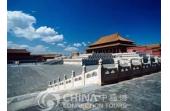White Emperor City
- Things to do
-
- Photo(12)
- Tips&article(100)
- Make it Happen
- Map
-
loading...
- Other Tours
-
- The Huangjueping Doodle Art Street
- Guiyuan Garden
- Chongqing Zoo
- Huangjueping Graffiti Street
- Wulong Karst Region
- Shibaozhai
- Huguang Guild Hall
- Zigong Dinosaur Museum
- People Liberation Monument
- Wuming Que and Dingfang Que
- Lesser Three Gorges
- Simianshan Tourist Attraction
- Fengjie Natural Pit
- Loquat Mountain Park
- Fengdu Ghost City
- The Great Hall of the People in
- Dazu Grottoes
- Goose Neck Park
- Chongqing
- Hongyan Revolutionary Memorial Museum
Within the boundary of Fengjie County, Chongqing, the BaidiChengsituates at the mouth of Qutang Gorge which is in the north of Yangtze River. Going downstream through Fengjie County by boat, people can see the mouth of Qutang Gorge in the distance. High on the towering hills in the north of Yangtze River stand clusters of castles and houses that are hided in the lush trees. This is the BaidiCheng—the well-renowned tourist site of the Three Gorges area.
The BaidiChengis surrounded by waters on three sides and mountains on the left side. Lonely standing among magnificent and steep mountains and waters in Kui Gate, the BaidiChengis extremely beautiful with its imposing image. To climb from the foot of the mountain, one has to take nearly 1000 steps to reach the top of the mountain—BaidiChengTop.
There, people can view and admire the majesty of Kui Gate. Walking to the back of the temple which is situated on the mountain top, people can see the Caoting River winding down from BaidiChengMountain into the Yangtze River. BaidiChengTemple has architecture of Ming and Qing Dynasties, such as Mingliang palace hall, Wuhou temple, Duaxing pavilion (pavilion for observing the stars) etc.
Mingliang Temple was built in the 12th year of Jiajing Emperor's
dominancy (1533). It is the main building of BaidiChengTemple. In
Mingliang Temple, there are statues of Liubei, Zhu Geliang, Guanyu
and Zhangfei (famous persons during the Three Kingdom Period). In
Wuhou Temple, three generations of Zhu Geliang family are
worshiped. Legend has it that Zhu Geliang used to watch the stars
at night in the Duanxing Pavilion. On both sides of Mingliang
temple and Wuhou temple, tablets of every dynasty are kept there.
In BaidiChengTemple, there are also exhibition rooms to show
historical and cultural relics since Neolithic period as well as
famous paintings and poems of the masters at all times.
These ancient buildings and cultural relics add more lustre to the
BaidiCheng. BaidiChengTemple boasts rich prose inscriptions and
historical relics of all dynasties. For example, there are the
famous willow-leaf-shaped bronze swords of Bashu period in eastern
Zhou dynasty, the hanging coffins relics of the Han Dynasty and the
Jin Dynasty, 73 inscriptions of poems and paintings since the Sui
Dynasty and the Tang Dynasty. What's more, there are also pottery,
cash tree, and other 1000 ancient relics and more than 100 pieces
of calligraphy and paintings written or drawn by masters of all
times. Tablets cluster stands on the eastern and western sides with
inscription of the Sui Dynasty of more than 1340 years' history.
Famous poets such as Libai, Dufu, Bai Juyi, Liu Yuxi, Sushi, Huang Tingjian, Fan Chengda, Liuyong all had climbed on BaidiChengand traveled around Kui Gate and therefore left many poems describing those scenic spots. Among the poems, the most impressive and popular one is "Departure from the BaidiChengat Dawn" written by Libai—"Bidding the Town farewell when morning clouds hang low.
A long trip through canyons I made in a mere day. Monkey cries were heard on either bank all through the way. While the boat passed by mountains swiftly in a row." Therefore, the BaidiChengis also endorsed as "Poem Town".
After the completion of the Three Gorges project, the water level will be raised. The BaidiChengwill be surrounded by water form all four sides which will make the town a fairy land with astonishing beauty and charming scenery. Visitors can get into the city directly by cruise. During the Three Kingdom Period, Liubei was defeated and retreated to BaidiCheng.
Feeling ashamed to meet his subordinates, he built Yong An (Eternal Peace) Palace within the BaidiChengand shortly died of sorrow and depression there. Before his death, he entrusted his regime and his son to the prime minister—Zhu Geliang. Historically, it is called "Liubei entrusted orphanage". Now in the BaidiChengTemple in BaidiCheng, colorful statues are erected to vividly recreate the situation where Liubei entrusted orphanage.
Tips & articles
|
|
|
forum discussion
|
|
|










